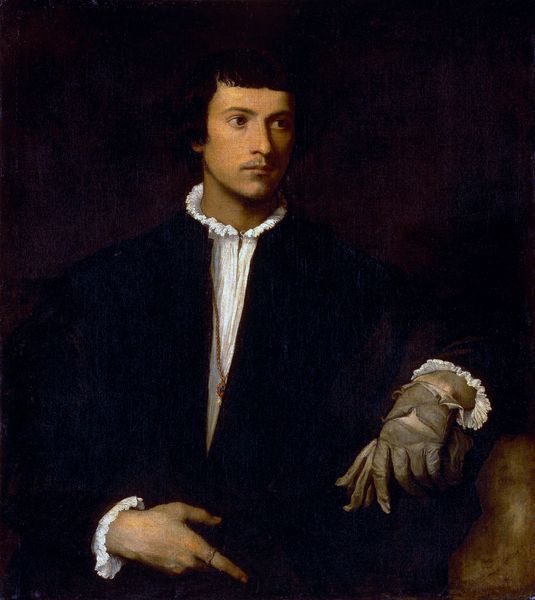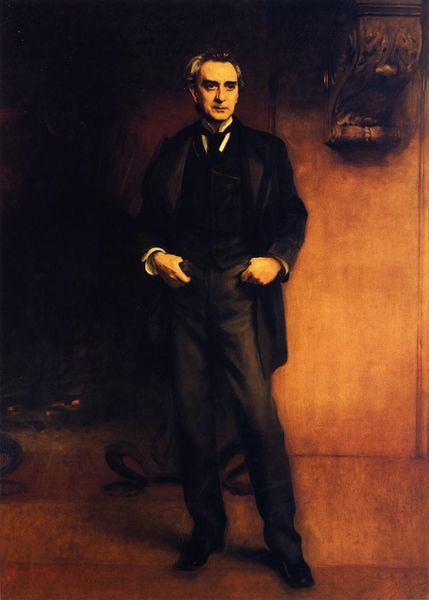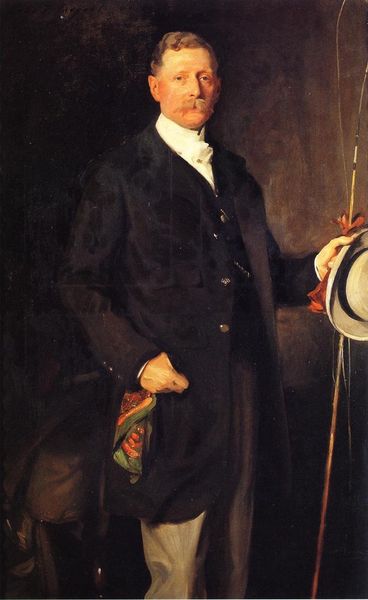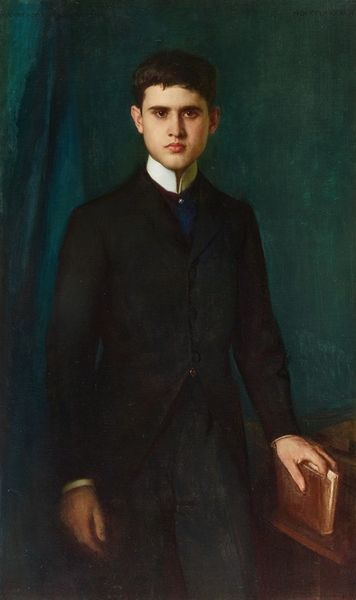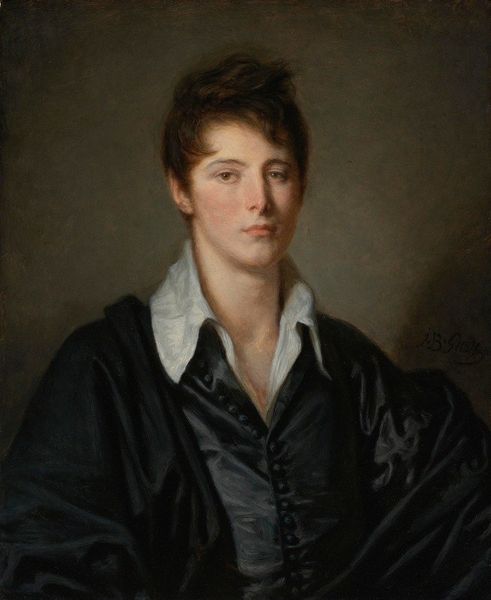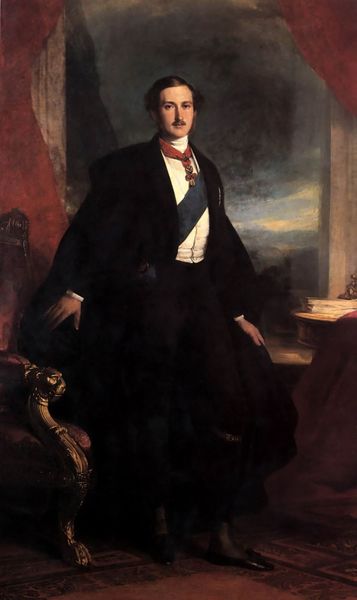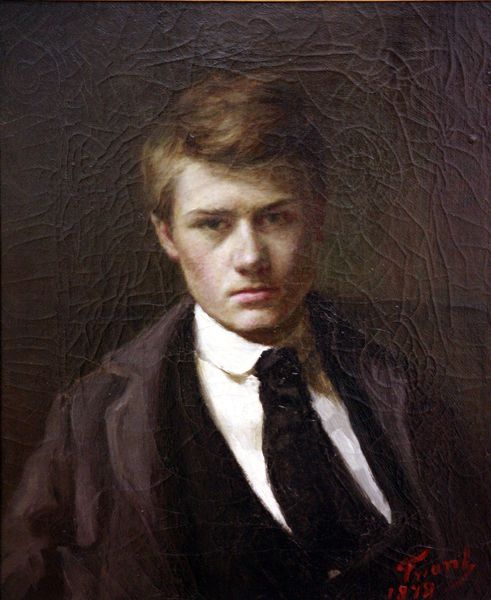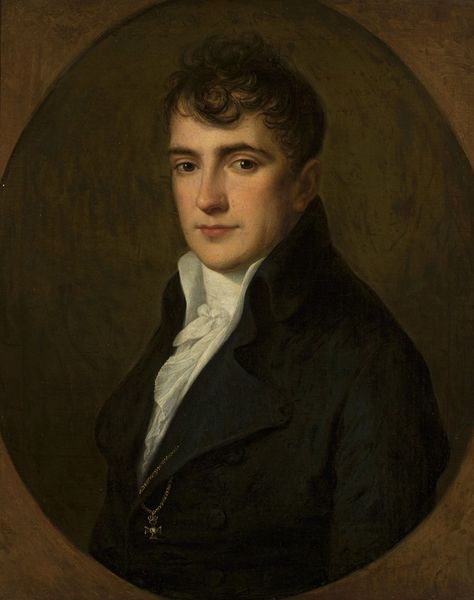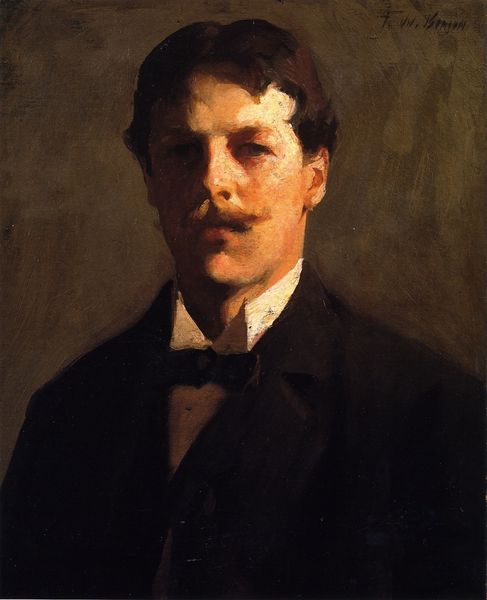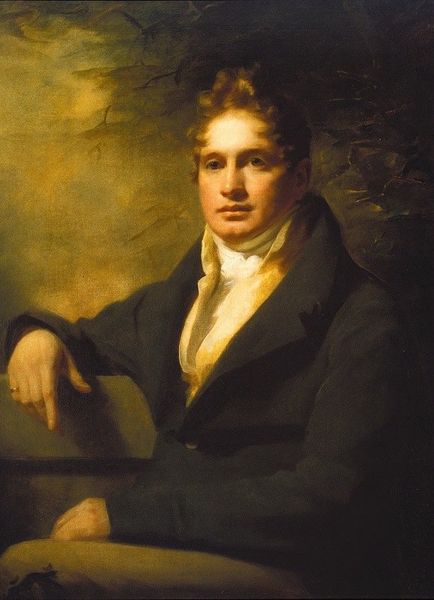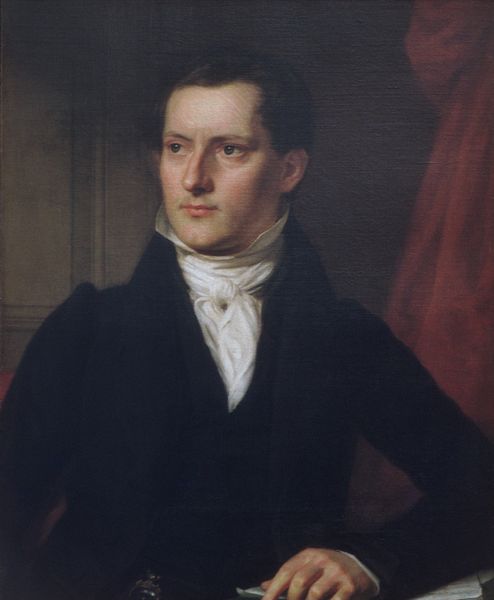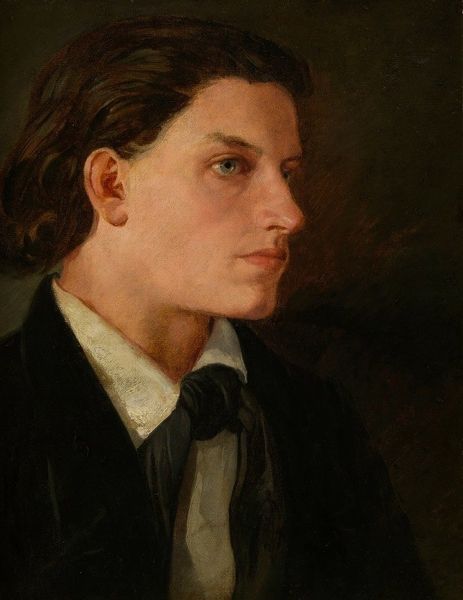
painting, oil-paint
#
portrait
#
painting
#
oil-paint
#
figuration
#
classicism
#
romanticism
#
history-painting
#
academic-art
Copyright: Public domain
Curator: Looking at this portrait, what jumps out at you? Editor: It's so shadowy! Dramatic. Almost melodramatic, you know? Like he’s hiding something… or maybe contemplating unveiling it. I immediately want to know the story behind those eyes. Curator: Well, what we have here is a portrait of Lorenzo Bartolini by Jean-Auguste-Dominique Ingres. The work, painted with oil on canvas, presents a figure deeply embedded in the artistic and intellectual currents of his time. Bartolini, himself a sculptor of renown, is captured in a way that speaks to the artistic sensibilities and philosophies of the 19th century. Editor: Sculptor, you say? Now the object in his hand makes sense! It looked like a fossilized croissant at first glance. Does this object reveal some attribute about the individual portrayed? Curator: Absolutely, that's a crucial element! Bartolini holding a fragment of sculpture becomes symbolic. Think about the haptic quality of sculpture itself – the act of molding, shaping, and giving form to raw material. The fragment serves as a visual metonym for Bartolini’s creative power, as well as a gesture toward the classical ideals he would have been striving to realize in his work. The incomplete sculpture also mirrors life, which is invariably unfinished, ephemeral. Editor: The classicism…and yet that intensity in his gaze hints at the burgeoning Romantic movement, no? A tension between order and passion, you can sense a subtle struggle here. His dress and manner align with the visual conventions of Academic art, don’t they? The somber clothing, the controlled posture… Curator: Precisely. Ingres was deeply rooted in Neoclassicism. But here, in this work, a transition emerges: romanticism and classicism intertwine. It’s almost as if Ingres anticipated a shift within the aesthetic and social currents of his epoch. Editor: I love how portraits can act like time capsules. To try to imagine all the things he experienced or thought of...it just really gets me. This makes me want to revisit my own creative endeavors. Perhaps dig out some half-finished sculptures, too! Curator: Indeed, considering the continuities within and between aesthetic epochs provides for novel engagements with our present experience, doesn't it?
Comments
No comments
Be the first to comment and join the conversation on the ultimate creative platform.

